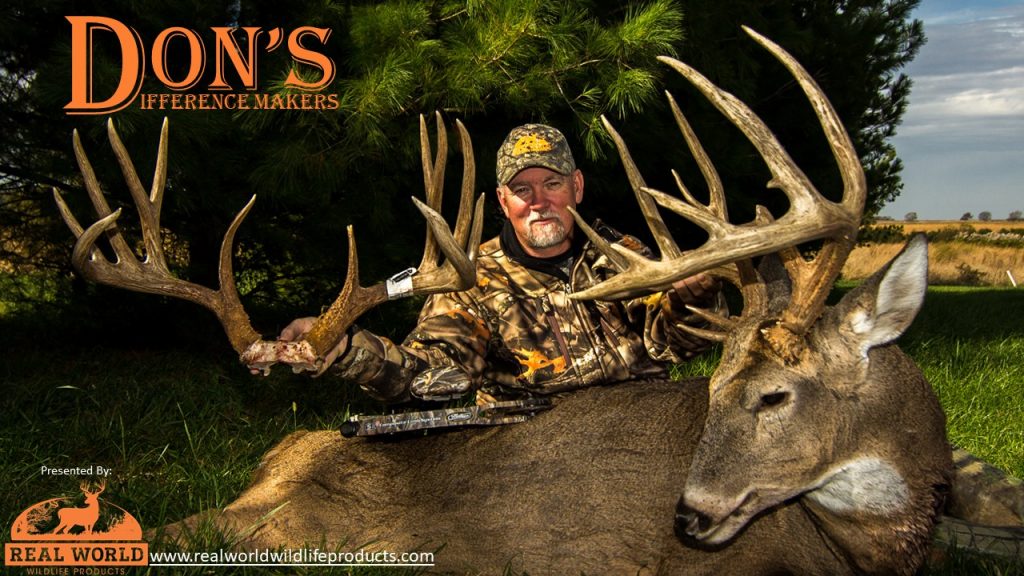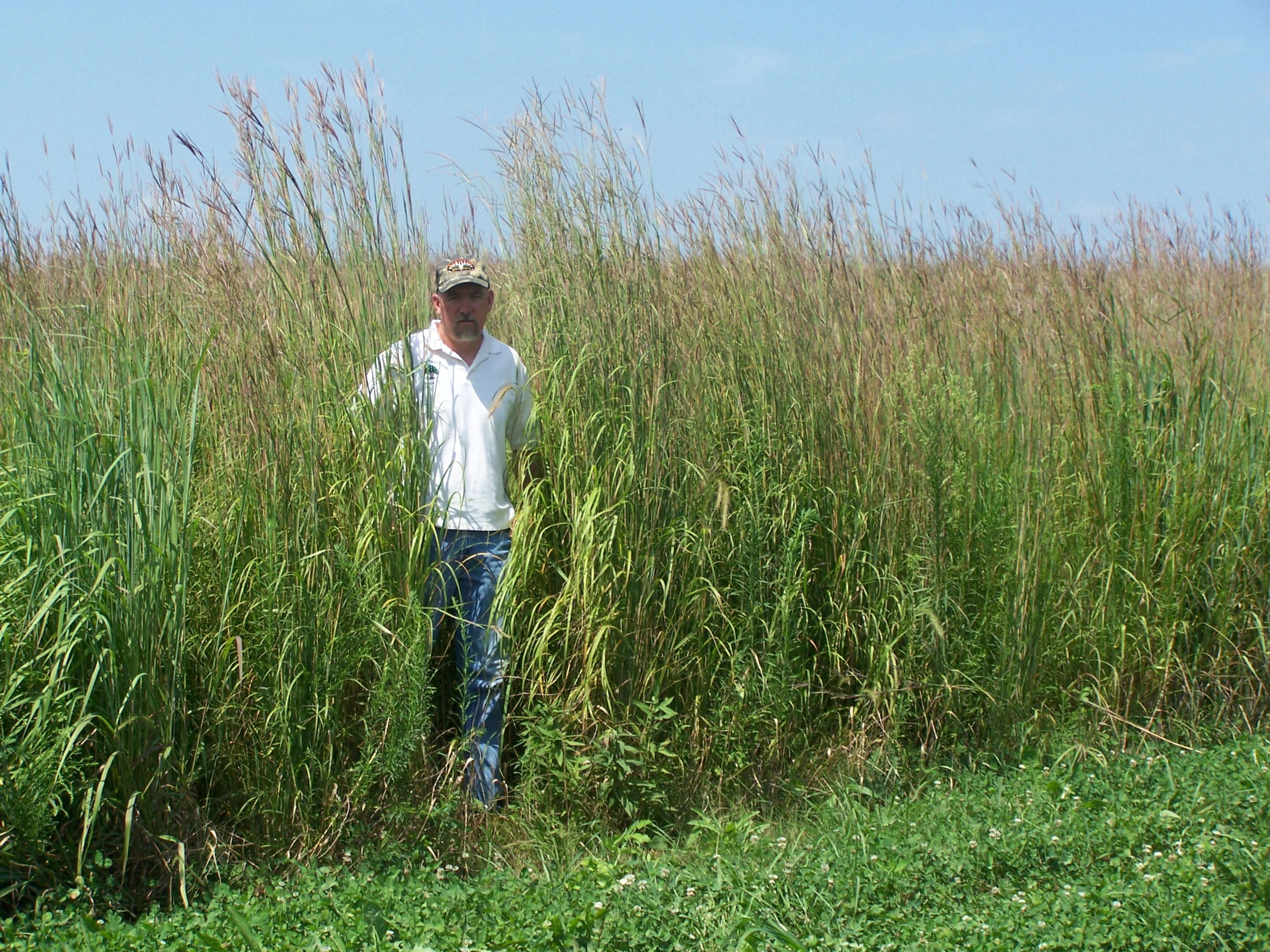
WELCOME TO A NEW BLOG CALLED
THIS MONTHLY BLOG WILL PROVIDE A WINDOW INTO STRATEGIES DON HIGGINS USES WHILE CHASING MATURE WHITETAILS. HOPE YOU ENJOY!
Switchgrass and Bedding-in-a-Bag Tips for Success
It seems that lately I have been asked on an almost daily basis what new products Real World will be introducing in 2019. The short answer is simply that we will have no new products but that doesn’t mean that there will be nothing new from us in 2019. We are doubling down on our efforts to have the very best customer service in the industry. Part of that approach will be in more timely education material presented in such a way that everyone should be able to easily understand it.
As part of these efforts, our marketing director recently informed me that he would like to see more regular contributions from me to Real Worlds blog page. He even has a name for these, “Don’s Difference Makers”. You will also be seeing regular blog posts from others on the Real World team.
Selecting a topic for the first installment of this blog series was very easy. We get more questions about our switchgrass and “Bedding-in-a-Bag” products than all other products combined. It also seems that folks have a harder time getting these grasses established than other seed products. So I am going to offer a few tips here to help you have success.

Let’s start with a brief but very candid discussion about the seed itself. Real World gets a few calls every year from customers who are convinced that they got “bad seed” or seed with poor germination. There are two very good reasons why that is almost never the case. First of all, Real World has all of our seed tested by an independent lab. One of the things tested is germination. This info is listed on the seed tag.
Secondly, Real World processes seed in large quantities. With these grasses we are dealing with seed-lots that are at least a ton. If there was a problem with a particular lot of seed we would hear about it from more than just one or two customers. Simply put, it is either all good or all bad and the germination report from the independent lab will show us that. This is all a long-winded way of saying, if you have problems with your grass planting, keep an open mind as you search for the answer and don’t quickly assume that the seed was bad.
A good native grass planting must start with a properly prepared seed bed. If you take shortcuts here, you will pay for it later. The planting site needs to be 100% completely free of all vegetation. It takes herbicide and in the case of a well-established cool season grass, often multiple herbicide applications to totally kill it. Plowing sod will not kill it! The roots will still be alive and will soon be shooting new growth to the surface which will eventually choke out any warm season grasses you plant.
The earlier in the season that these grasses can be planted the better so preparing the plot the year before is the best approach. A poorly prepared site is going to yield poor results. I prefer to frost-seed switchgrass especially in the winter. Frost-seeding is simply broadcasting the seed onto bare ground in the winter so that it will be there to germinate in the spring as soon as conditions are right. When it comes to frost-seeding switchgrass, the earlier in the winter the better. It can be done on snow-covered ground in January with great results.
The fluffy seeds in Real Worlds “Bedding-in-a-Bag” are a little trickier to plant as they do not flow through a broadcast seeder very well. For broadcast seeding mix the seed with pelletized lime so that it will flow through the seeder. The best method is with a no-till drill if one is available. Keep in mind with all of these grasses that one of the most common mistakes is planting the seed too deep. 1/8” is perfect, ¼” is deep and ½” is too deep and will definitely affect germination results.

Once you have your grass plot planted, weed control is very important. Too many weeds will certainly have a negative impact on your grass stand. Atrazine is a herbicide that can be sprayed over a switchgrass planting to prevent weeds. Atrazine is NOT a contact herbicide that will kill weeds that have already germinated and are growing. DO NOT spray atrazine on a Bedding-in-a-Bag planting!!!! For Bedding-in-a-Bag plots use Plateau herbicide at a rate of no more than 4 ounces per acre. Plateau is also a residual herbicide that works in the soil to help prevent weeds.
Once your new grass plot greens up, closely observe it for weed competition. If broadleaf weeds are thick enough to be an issue, they can easily be dealt with by spraying 2-4D herbicide once the vegetation in the plot is 12-18” high. 2-4D will not harm any grass.
I often get asked how tall one should expect these grasses to be at the end of the first growing season. That is simply a loaded question with a lot of variables. Soil fertility, weed competition, planting date and weather (rain) will all impact the first years growth. I have seen first year plantings that were knee-high and others that were 7’ high.
It typically takes 2-3 years to establish a good stand of these native grasses. Be patient! I can’t tell you how many customers I have talked to that were ready to plow up their plots and start over towards the end of the first growing season. In many cases I was able to talk them out of doing so and later they thanked me for it as the plot they thought was a disaster eventually became a beautiful stand of towering grasses.
Finally, burning your grass plot is one of the best things you can do for it. I recommend burning it after the second growing season and then every other year thereafter. Once established a grass planting should last many years if properly maintained.
A field of tall bedding grasses is some of the best whitetail cover on the planet and with a little planning, preparation and patience you can add this game-changer to your property.